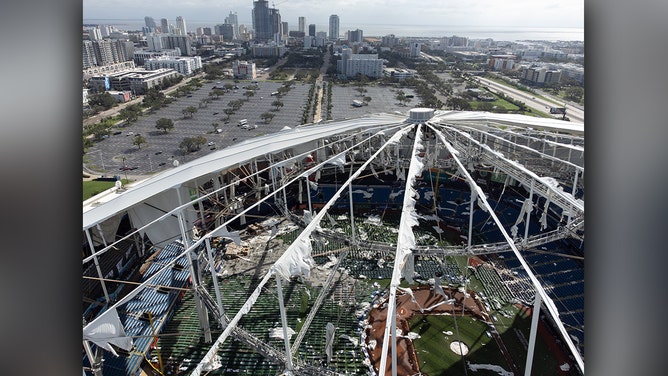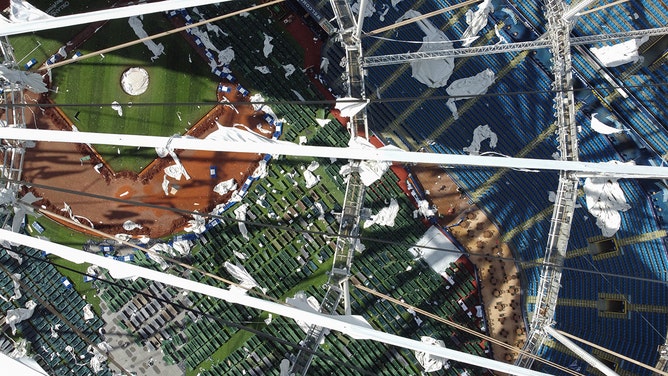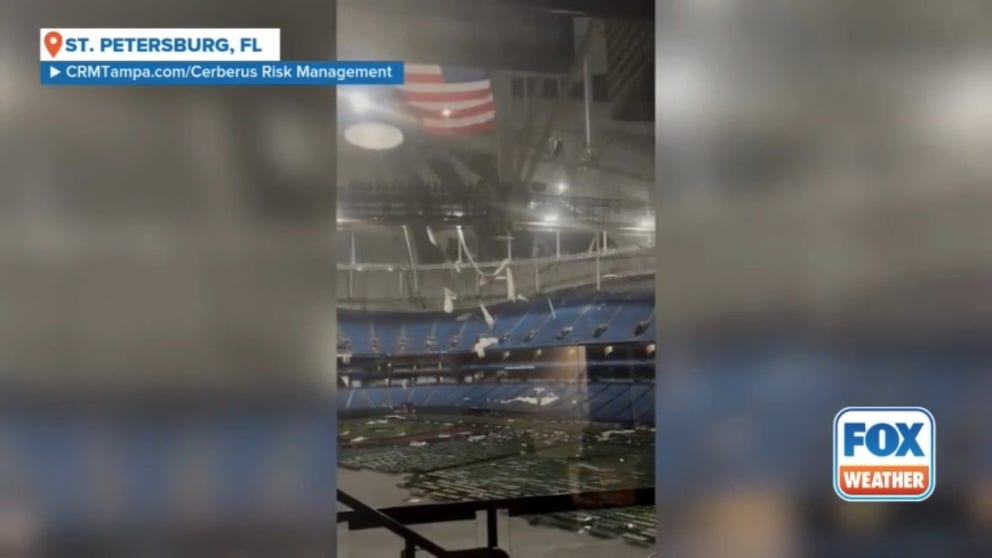Hurricane Milton's mark on Tropicana Field in Florida highlights need for stronger stadiums
To build resilient stadiums, architects must consider various environmental factors. In many places, it could be multiple hazards, according to Ahmad Rahimian, director of building structures at WSP.
How to design future stadiums to withstand impacts from powerful storms, hurricanes
Ahmad Rahimian, WSP Director of Building Structures, joins FOX Weather to discuss the innovative design elements that can enhance resilience against storms and how the current design flaws, like those highlighted by Milton, have influenced ongoing rebuilding efforts.
ST. PETERSBURG, Fla. – As the frequency and intensity of major hurricanes increase, architects are racing to develop new building codes that can protect arenas worldwide from the devastating forces unleashed by storms.
Hurricane Milton, which ravaged Florida, underscored the need for more resilient infrastructure, according to Ahmad Rahimian, director of building structures at WSP, who recently spoke to FOX Weather.
The iconic Tropicana Field, home of the Tampa Bay Rays, suffered significant damage during the storm, despite being built relatively recently in the 1990s.
"This building was designed about 40 years ago," he said. "So the building codes evolved."
SEE IT: FIRST LOOK INSIDE BATTERED TAMPA BAY RAYS' TROPICANA FIELD AFTER MILTON'S FORCE SHREDS ROOF
Rahimian explained that while the stadium's life safety systems performed well, its roof was unable to withstand the powerful winds.
"Nowadays, the codes have advanced a lot. We have what we call performance-based design," Rahimian adds. "We design beyond just life safety. We design for a level of performance that different facilities need to be designed for."
This approach goes beyond simply ensuring safety and focuses on designing structures that can maintain functionality during extreme weather events. Hospitals and stadiums, for example, require higher levels of resilience due to their critical roles in society, according to Rahimian.
TAMPA, ST. PETERSBURG LASHED BY 100-MPH WINDS, CATASTROPHIC FLASH FLOODING FROM HURRICANE MILTON
A look inside Tropicana Field after damaged by Hurricane Milton
A security agent is offering FOX Weather a first glimpse of the extensive damage Hurricane Milton inflicted on Tropicana Field, home of the Tampa Bay Rays.
To build resilient stadiums, architects must consider various environmental factors.
"In many places, it could be multi-hazards," Rahimian said. "It's not just hurricanes. It could be earthquakes. It could be snow. All those things have to be factored in."
TROPICANA FIELD STINGRAYS RELOCATED AFTER DESTRUCTION TO FIELD DURING HURRICANE MILTON
Tropicana Field stingrays safely relocated after Hurricane Milton damage
The cownose stingrays that lived at Tropicana Field have been safely transferred to the Florida Aquarium after the roof at the stadium was damaged during Hurricane Milton.
Rahimian said WSP's global reach allows them to address these challenges in different regions.
He also stressed the importance of adopting international building codes, such as those from the U.S. or Europe, to enhance safety standards in regions with less stringent regulations.
By adopting international building codes and incorporating innovative design principles, Rahimian said, the industry can create stadiums that not only withstand extreme weather but also serve as safe havens for communities during disasters.












